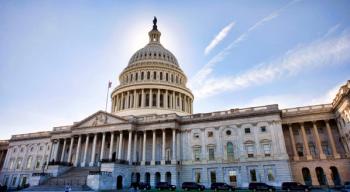
Insurers still face exchange headaches
Expectations surpassed, but back-end fixes need to ensure data, payments
The decision to extend consumer enrollment in health exchanges to April 1 and beyond paid off big for the Obama administration, as a late surge boosted total sign-ups to more than 8 million. That brought cheers from Democrats and the White House, and left Republicans struggling to document that many enrollees were not paying premiums, and thus did not count.
WechslerHowever, at a hearing last month before the House Energy & Commerce Committee, executives from leading insurance companies indicated that 80% to 90% of new enrollees were paying their bills, similar to rates for health insurance enrollment overall. Republicans continued to criticize officials at the Department of Health and Human Services (HHS) for failing to provide requested enrollment information, but had to pull back when industry reports indicated that their earlier calculation of low premium payments was premature.
Paul Wingle of Aetna told the Committee that his company had enrolled more than 600,000 members as of late April, and about 500,000 had paid, achieving a mid-80% payment rate. Darren Rogers reported that Blue Cross and Blue Shield plans in five states enrolled about 600,000 beneficiaries through the exchanges, and that initial payments rates ran between 83% and 93% through early April. And Dennis Matheis of WellPoint said that payment was ranging up to 90% for policies where the premium deadline had passed.
Matheis also noted that in the 14 states where WellPoint sells health plans on exchanges, the range of effective dates for policies spreads out when premiums are due. Many plans offer flexibility in deadlines for enrollees to pay their first month’s premiums, explained Mark Pratt, senior vice prescient at American’s Health Insurance Plans (AHIP). He also noted that a proportion of sign-ups may be duplicates due to system problems early on.
Information missing
The lack of accurate information on who has paid premiums is partly due to problems with the “back-end” of the healthcare.gov exchange operation. It took a major effort last fall for HHS to fix the front end of the system so consumers could obtain plan information and sign up for coverage. That meant only further delays in establishing a fully-functional financial management system.
Even though consumers are sending in checks, insurers still lack important information on who their new customers are and whether they fully qualify for subsidies and discounts. Insurers acknowledged at the House hearing that the federal exchange still was not able to provide accurate data on enrollment, subsidies to low-income individuals as well as beneficiary health status and its relation to risk adjustment. Key information is coming to insurers very slowly through manual processes and “workarounds,” and extensive adjustments in enrollment data may be needed in the months ahead.
Insurers are sending invoices to the U.S. Treasury that add up to about $10 billion a month based on individual income information submitted to support reduced rates. The feds are using an “interim” accounting process to reimburse insurers.
At her first Senate confirmation hearing for HHS secretary, Sylvia Matthews Burwell said that fixing the exchange IT system was a top priority, but no one is expecting much improvement in the back-end operations before September. Until then, information on actual enrollment numbers, premium payments, subsidies and beneficiary health status (needed for risk adjustment) remain uncertain, making it difficult to calculate the financial impact of health reform on the federal budget and the industry.
Newsletter
Get the latest industry news, event updates, and more from Managed healthcare Executive.





















































